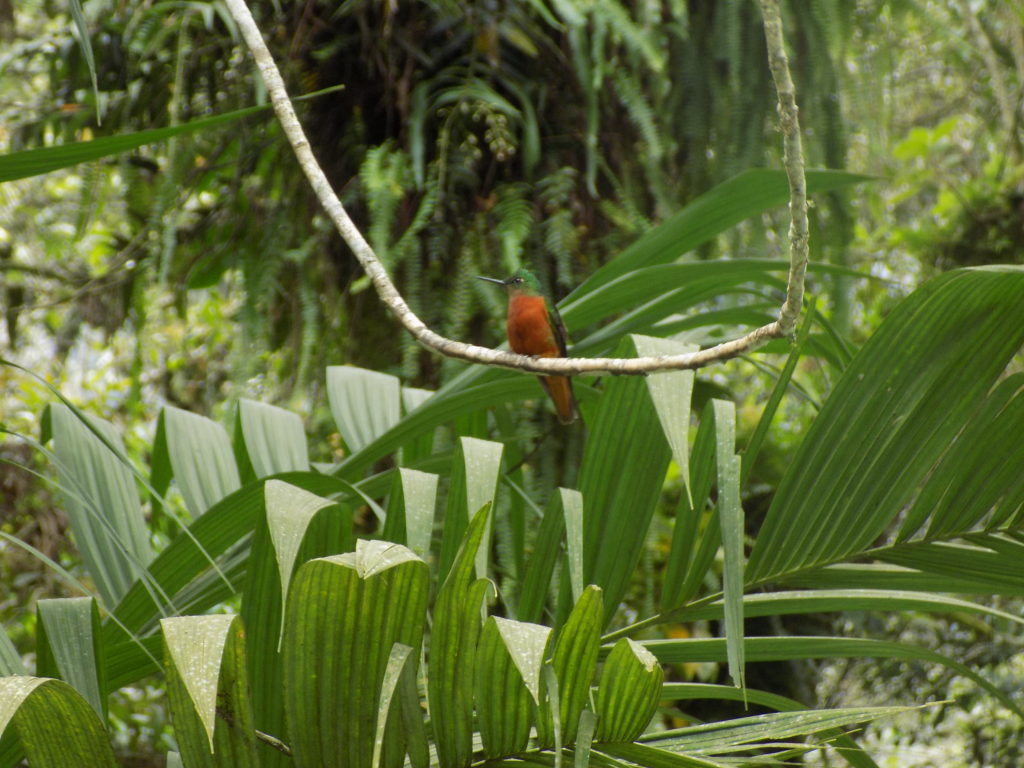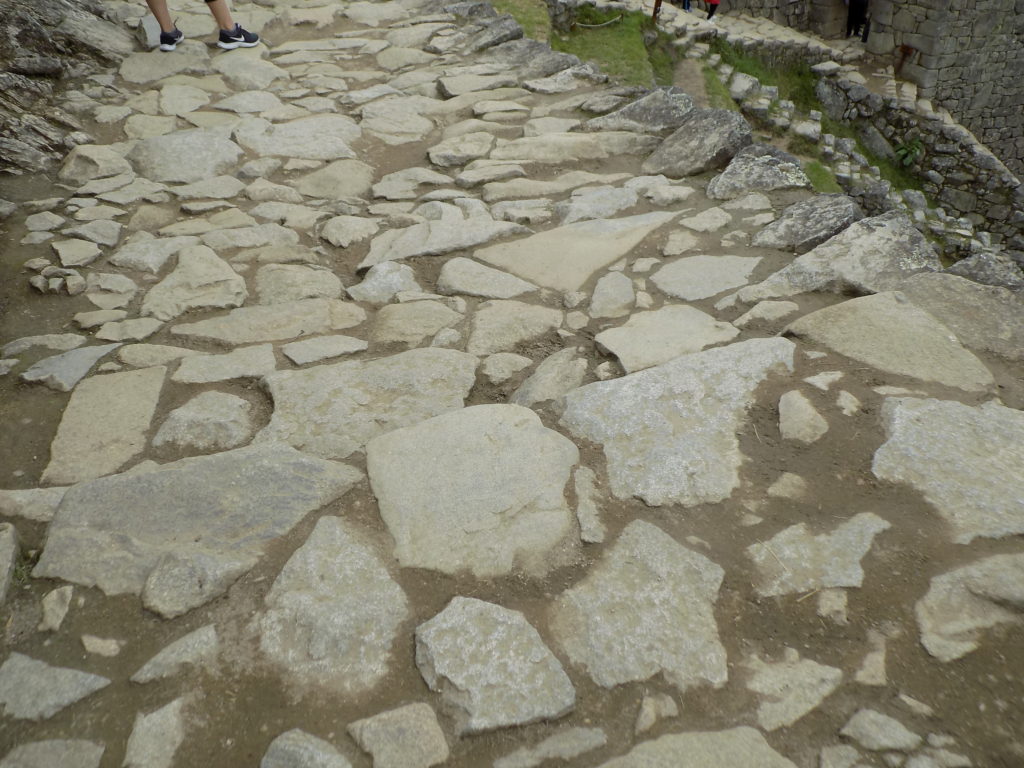I’m going to skip writing about our return to Aguas Calientes, dinner, and bedding down for the night because it’s simply too mundane a series of events to write about after walking through Machu Picchu. Don’t get me wrong, Aguas Calientes is charming for a small town but everything left little impression on me that night.
We had a few free hours in the morning before we needed to board the train back to Ollantaytambo where we’d meet the van that would return us to Cusco so we started with a walk through the market that “hadn’t existed” when we arrived. I think Jan made the first purchase and the young woman gave each of us a llama key chain as a bonus. I bought a new hat that was, of course, made in China.
Based on Berner’s suggestion, we wandered around until we found the Inkaterra Hotel – a high priced five-star resort – where we had an expensive mid-morning snack and strolled through a small section of the hotel’s five-hectare reserve where I was lucky enough to capture this fellow (on camera)
taking a breather before he went off to the hummingbird feeder.
Going to the dogs.
Before we leave Aguas Calientes I want to write a few words based solely on my observations about the Peruvian people and their dogs. Since this is an anecdotal observation, it might or might not accurately describe reality.
Peruvians seem to have a different attitude toward their dogs than Americans. Based on the number of dogs I saw wandering the streets of Puno, Cusco, and yes, Aguas Calientes, I concluded that Peruvians allow their pets much more freedom and latitude than one typically sees in the United States where it’s unusual to see untethered dogs roaming so freely especially in urban settings. But this seems to be the tradition in Perú and if there are laws against it they are entirely unenforced. I didn’t see obvious collars or licenses so, for me, it was impossible to discern the difference between pets and strays – if there was one.
Although I share my living space with my cat Zicomo, I am also an unquestioned dog lover. Because I miss that human-animal companion interaction when I travel, I often approach either species and ask their permission to interact. It’s usually brief because one or the other of us has or wants to move on. That wasn’t quite the case in Aguas Calientes where I met this fellow
who attached himself to me and walked with us for so long that we stopped and Jill took this photo. At moments it seemed as though he was asking if he could travel with me. He certainly enjoyed the attention and I enjoyed giving it.
All that remains for the rest of the day is travel. We’ll start by taking the train back to Ollantaytambo, followed by that van ride to Cusco where we’ll spend our final night together as a trio. On the twenty-third, Jill will set off for her extension to the Amazon while Jan and I will each have a night in Lima before she leaves for her Amazon adventure and I head south toward the desert.
While we’re tracking back to Cusco, I’ll again shift my focus to some of the remarkable accomplishments of the Inkan empire and hope you find it interesting. For those who prefer just looking at the pictures, there aren’t many from this day but here’s the link.
Road builders.
At its height, the Tawantinsuyu was an empire so vast that it constituted the largest native nation state that had ever existed in the western hemisphere. Its tentacles stretched from an area north of present-day Quito to south of Santiago, Chile and reached from the Pacific Ocean on the west to Santa Cruz (in modern Bolivia) – the location of my airport adventure – in the east. Thus, it’s possible that sometime as we wandered about Tiwanaku, or Copacabana or, more likely, the streets of Cusco we had walked on some part of the Inkan Qhapaq Ñan or Royal Highway. However, the only place I can state with certainty that I trod on that road is on these few meters approaching the main gate to Machu Picchu.
You may recall from previous posts that the Inkan road system extended for more than 40,000 kilometers and that the system of zeq’e radiated from Qorikancha in Cusco to each of the four suyus. (The formal paths of zeq’es were not identical with the Qhapaq Ñan or any other parts of Inkan road system. However, roads and zeq’e lines did merge in places.) Another bit of data you need to recall to add a measure of perspective is that the Inkas built their empire without the wheel, the horse, or any significant beasts of burden.
Of course, while they’ve earned the credit we ascribe for this construction, the Inkas were not the only road builders of the high Andes. Often, their roads followed routes established by some of the predecessor cultures we’ve briefly met such as the Tiwanaku, the Wari, and the Chimú. But it was the Inkas who connected them all and demonstrated the greatest engineering breadth and mastery sometimes building roads parallel to existing ones merely to seemingly demonstrate that mastery. (It’s an effective nonmusical way of making this point.)
At other times building roads was a way of collecting the manpower levy under the system called mit’a. Remember that the Inkas didn’t use money so in order to receive the benefits provided by the state, every able-bodied person was required to spend at least a portion of each year providing labor. Of course, forced labor is also an effective way of quietly stemming any plans for rebellion.
In the next post, I’ll examine this road system in more depth and introduce you to an Inkan message delivery service I’ve called the Chaski Express.


